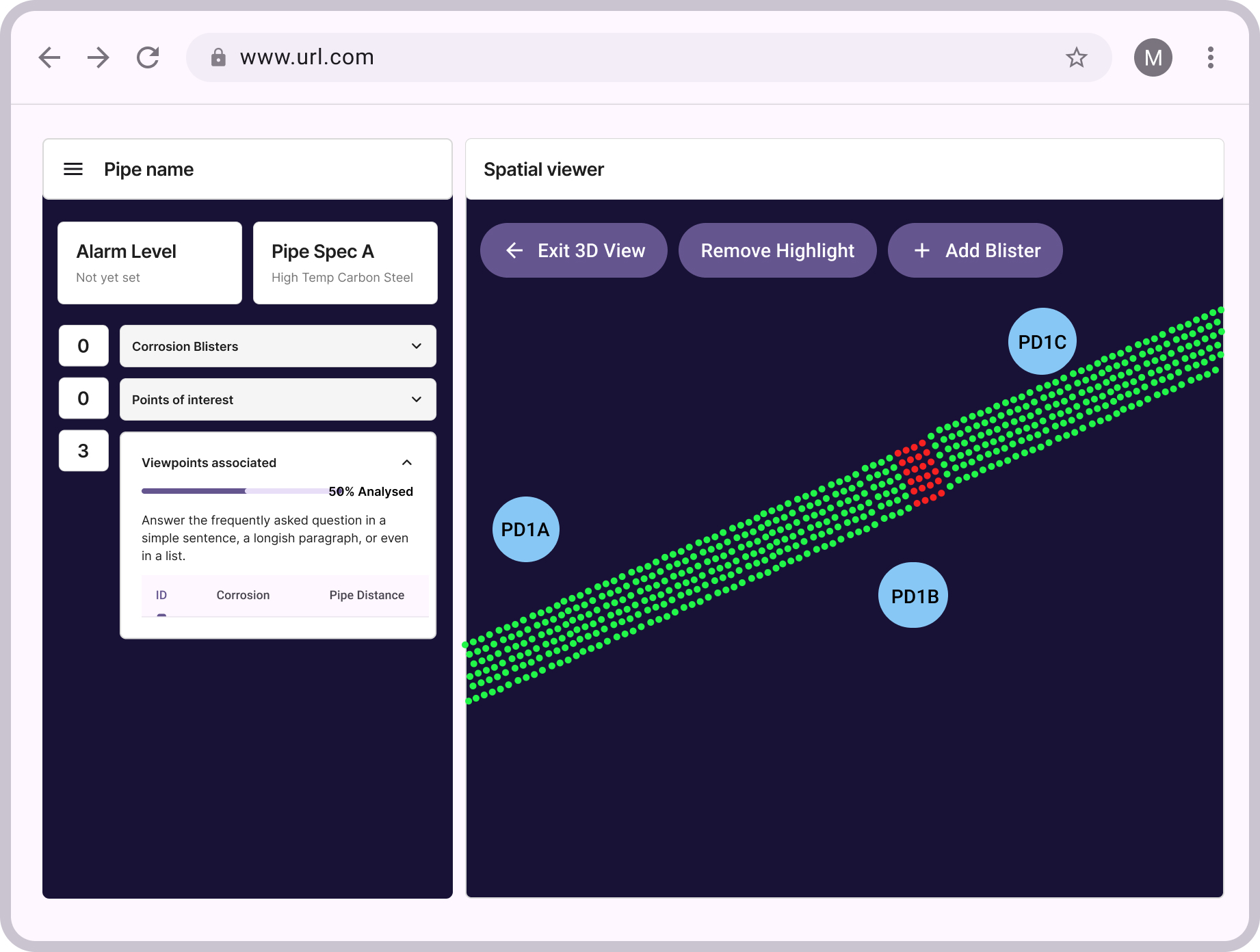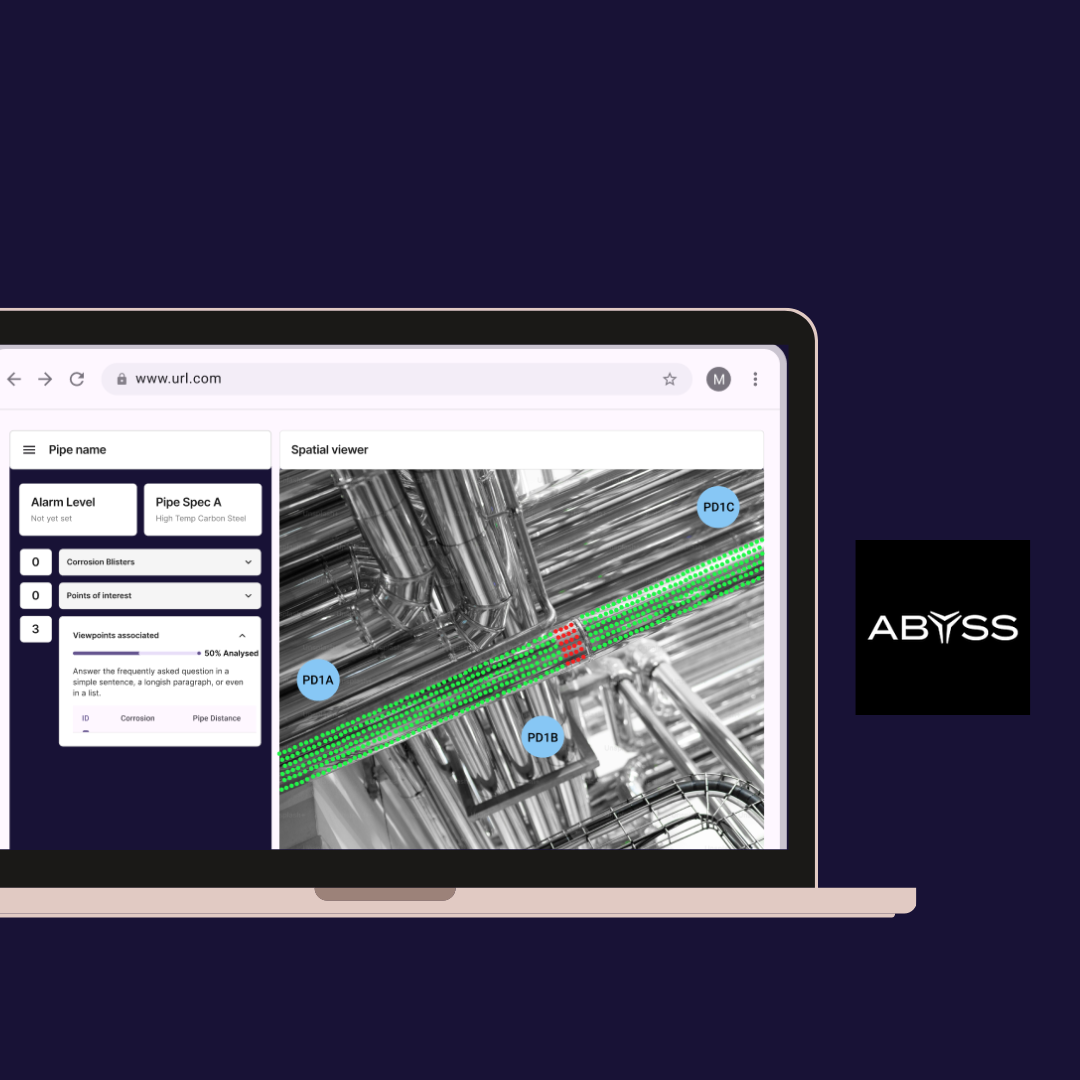Project Summary
- Client: Abyss Solutions
- Role: Product Designer (First hire)
- Project Duration: 3 months
- Focus: Workflow design, usability testing, data integrity improvement
As the first product designer at Abyss, I led the UX overhaul of their flagship application, Fabric (v2)—an AI-powered tool that helps engineers prioritize corrosion risk on offshore oil platforms. The goal was to improve the accuracy and usability of internal reporting workflows, reduce data entry errors, and increase trust in AI-assisted recommendations.
Working alongside a multidisciplinary team (Product, Dev, ML, Engineering), I ran internal research and iterative design sprints, directly improving productivity and data reliability for internal asset integrity engineers.
Team & Collaboration
- Worked closely with the Product Manager, Product Owner, ML Lead, Tech Lead, and a 4-person dev team
- Collaborated with five internal engineer-users for continuous feedback
- Integrated directly into strategic discussions to shape roadmap approach
Challenge
Internal engineers struggled with:
- Data duplication and missing fields during reporting
- Difficulty navigating previous scan results and tracking completed work
- Low confidence in the accuracy of AI-generated insights due to poor visibility and manual overrides
UX Process & Solutions
Scope & Research
- Conducted contextual interviews with 5 internal users (mechanical integrity engineers)
- Audited v1 app flows and pain points
- Aligned stakeholders around a shared goal: increasing trust in AI-assisted insights
Design Solutions
- Introduced structured workflows with clear data validation and task progression
- Designed and validated a 3D point cloud viewer to improve spatial navigation
- Embedded engineer review checkpoints directly into the AI reporting process
- Rebuilt UI to separate critical vs. supplementary inputs, reducing cognitive load
Testing & Evaluation
- Rolled out ongoing usability testing of the beta version throughout sprints
- Captured both task efficiency metrics and qualitative feedback
- Supported a shift from feature-based roadmaps to outcome-driven planning (now/next/later model)
Impact
User Outcome
- Increased trust and accuracy in AI-generated corrosion findings
- Engineers reported smoother task flows and improved ability to catch errors
Business Outcome
- Internal user workflow efficiency improved 4×
- Product shifted toward outcomes over features, helping reposition its value to clients “This will give me a better perspective of what to look for—and it will help me a lot.” – Asset Integrity Engineer, Abyss Solutions
 UI Design
UI Design
Learnings
This project deepened my confidence in collaborative UX with engineering-heavy teams. I learned to transition from static to interactive models earlier in usability studies and built fluency with industry terminology by creating a shared glossary. I also refined my visual and interaction design judgment for data-dense industrial UIs.
Next Steps
I helped shape the foundation for Abyss’s future roadmap: a system that could assist engineers in identifying not just external corrosion but also internal mechanisms like corrosion under supports, insulation, or flanges. The goal was to expand value by enabling engineers to proactively triage inspection priorities—boosting client platform usage in the process.
